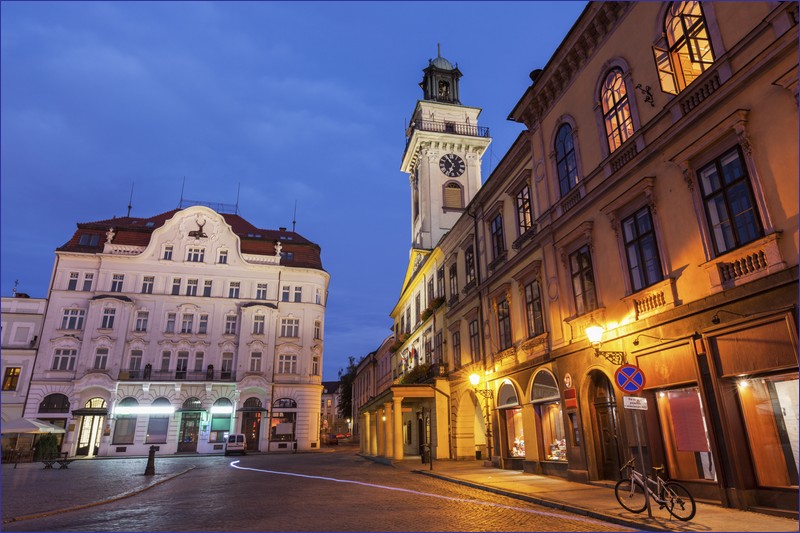Ostrava is the capital of the Moravian-Silesian Region and one of the largest cities in the Czech Republic. It’s an industrial hub. It’s a city I have mixed feelings about—sometimes I really enjoy walking around the center and spending hours there, and at other times Ostrava seems quite ugly to me.
The city center looks average; what I like the most is the observation tower of the New Town Hall (Nová radnice). You take an elevator to the top and can enjoy panoramic views of Ostrava. Families with children can visit the nearby Silesian Ostrava Castle (Slezskoostravský hrad), which houses the Amber and Silk Road Museum.
Near the city center is the industrial heritage site Lower Vítkovice (Dolní Vítkovice). This area, once an industrial complex, has been revitalized and opened to tourists. It includes a former coke plant, steelworks blast furnaces, and the Hlubina coal mine. Administrative buildings are also open to visitors. It’s one of the most significant industrial heritage sites in the Czech Republic and is frequently featured on travel blogs.
My favorite way to explore Ostrava was using public transport with a 24-hour ticket (available from vending machines at the station). I recommend a ride and walk through Poruba, a district with socialist realist architecture similar in style (though only slightly) to Nowa Huta. In Vítkovice, you’ll find a historic town hall and a 19th-century workers’ colony.
The zoo on the outskirts of Ostrava receives very good reviews.
Ostrava is also an important transport hub.
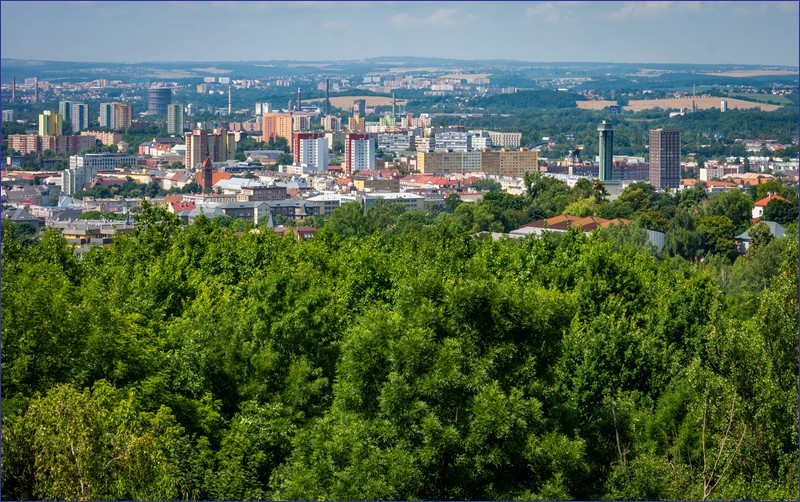
Day trips from Ostrava by train – direction: Jeseník
Opava – Architecturally, an average town, good for a few hours’ visit. Its most famous landmarks are the Art Nouveau Town Hall from 1903 and the Church of the Assumption of the Virgin Mary from the late 14th century. The Silesian Theatre building and St. Adalbert’s Church are attractive, though the kitschy sculptures nearby ruin the impression. The center mainly features religious monuments, such as the Church of the Holy Spirit, an Evangelical Church, and architectural gems like the Sobek Palace (1730) and the Silesian Regional Museum, which is highly recommended.
A Planetary Trail has been set up around the town, with scale models of the Solar System planets placed at various locations.
Trains from Ostrava run frequently and quickly. Two beautifully renovated railway stations.
Hradec nad Moravicí – A small town with one of the most interesting attractions of the Czech-Polish border: a castle and palace complex, divided into the older White Castle and newer Red Castle.
Today’s castle looks very different from the original early medieval fortification due to numerous renovations. There are two sightseeing routes: the White Castle includes tastefully decorated rooms; the Red Castle has a restaurant and a concert hall. You can also visit the White Tower from the 19th century and the English-style park.
Other local attractions include a stone tower above the Moravice River, the Church of Sts. Peter and Paul, a Way of the Cross, and the cemetery Church of St. James. Local trains run from Opava to Hradec nad Moravicí. The train station is less than 3 km from the castle.
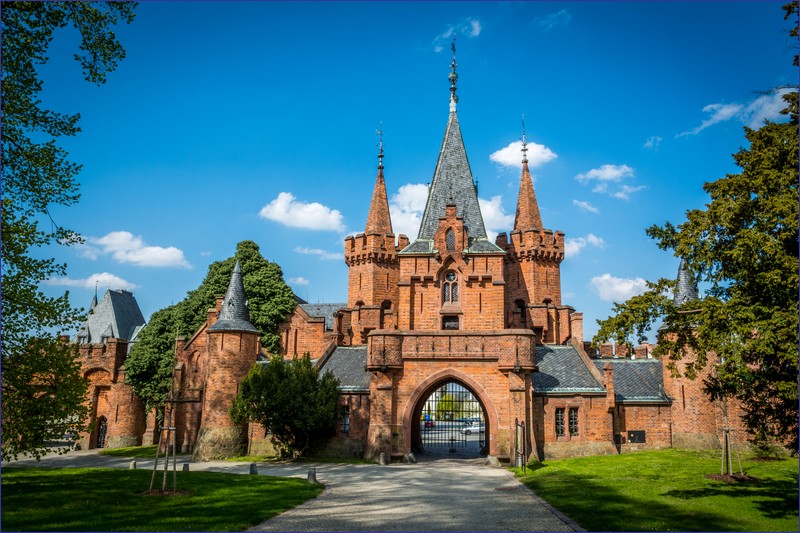
Třemešná–Osoblaha Narrow-Gauge Railway – A 20-kilometer narrow-gauge line in the Moravian-Silesian Region that starts at Třemešná ve Slezsku, served by trains from Krnov toward Głuchołazy (Poland).
This is a scheduled line using diesel locomotives and typical Czech narrow-gauge carriages, operated by České dráhy (Czech Railways). Tickets follow the carrier’s pricing. In summer, some trains are steam-operated, run by Silesian Regional Railways (Slezské zemské dráhy), with a separate fare structure.
The narrow-gauge railway line was severely damaged by floods in 2024.
Jeseník – A town of about 11,000 people near the Polish border. It’s a tourist and ski resort, and a popular excursion destination. Known for witch trials in the past, it became famous in the 19th century as a spa town. Its founder, Vincenz Priessnitz, is credited with inventing the shower. The town features a tidy center, hiking trails, mineral springs, and caves in the vicinity.
Krnov (optional) – An average, somewhat neglected town. Attractions in the center include a synagogue, the Municipal Museum, and several churches. About 3 km from the center is the Church of Our Lady of Sorrows and a viewing tower. Worth visiting, but not a must-see.
Bruntál – A former mining town near the Polish border. Beyond the market square, highlights include the castle with gardens, fragments of town walls (including the Stone Tower), several churches, and a Jewish cemetery outside the center. Express trains from Ostrava to Olomouc stop here (a different route than via Hranice na Moravě).
Hlučín (optional) – A small town near Ostrava. Reachable by suburban bus or train from Opava. A destination for train enthusiasts. Average in appearance. Attractions include a palace with a regional museum, St. John the Baptist Church, an Evangelical Church, and the Wettekamp family mausoleum. Nearby Darkovičky has bunkers from the former fortification line.
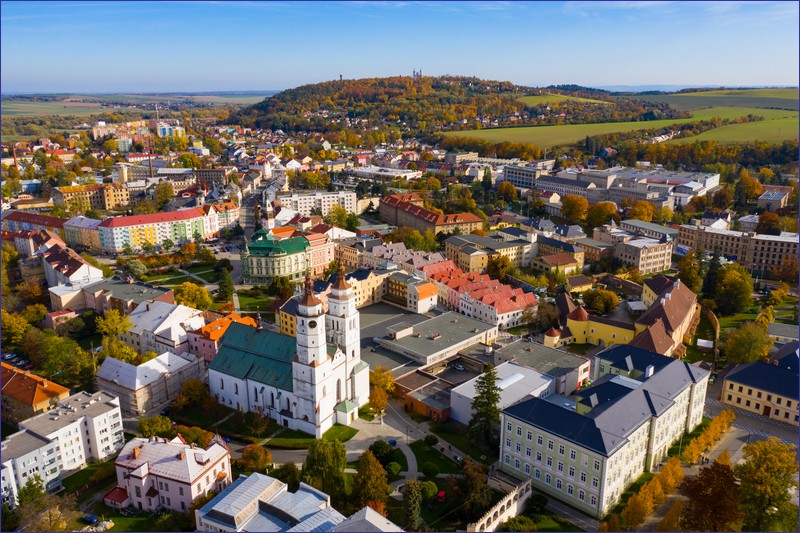
Direction: Nový Jičín and surroundings
Kopřivnice (optional) – Architecturally defined by concrete housing blocks. Popular among tourists for the Tatra Museum and Vintage Car Museum. The train station is right next to the Tatra Museum. Served by Studénka–Věrovice trains.
Nový Jičín – A small town with a beautiful center built around Masaryk Square. No world-class monuments, but great for a peaceful two-hour walk. My favorite town in the Moravian-Silesian Region. Its highlight is the train station. Reachable via Suchdol nad Odrou, which lies between Ostrava and Přerov/Olomouc. Suchdol’s station resembles Bielsko-Biała Main Station. I recommend a day trip including Nový Jičín, Štramberk, and possibly Kopřivnice. Buses run from Nový Jičín to Štramberk.
Příbor (optional) – A small, peaceful, pleasant town known as the birthplace of Sigmund Freud. Highlights include the Freud Museum, his birth house, the Church of the Nativity of the Virgin Mary, the main square, and a scenic view from the railway and river. Trains on the Studénka–Věrovice line stop here, as well as in Kopřivnice and Štramberk, allowing you to visit all three (plus Nový Jičín) in one day.
Štramberk – In my opinion, one of the most beautiful Czech towns. Its historic center is far from the station, so I recommend taking a bus from Nový Jičín. The stop is close to the hill, and it takes about 10 minutes to walk to the charming market square and the tower above the town. Famous for Štramberk Ears (cookies). You pass wooden Wallachian houses and Baroque townhouses on the way. Highly recommended. Trains on the Studénka–Věrovice line stop here.
Fulnek (optional) – A quiet, sleepy town with a small center. The castle dominates the skyline, but it is privately owned and not open to visitors. Apart from the castle and square, the main attractions are religious sites, including the Chapel of St. Roch and Sebastian, St. Joseph’s Church, and the Church of the Holy Trinity. Accessible via train from Suchdol nad Odrou.
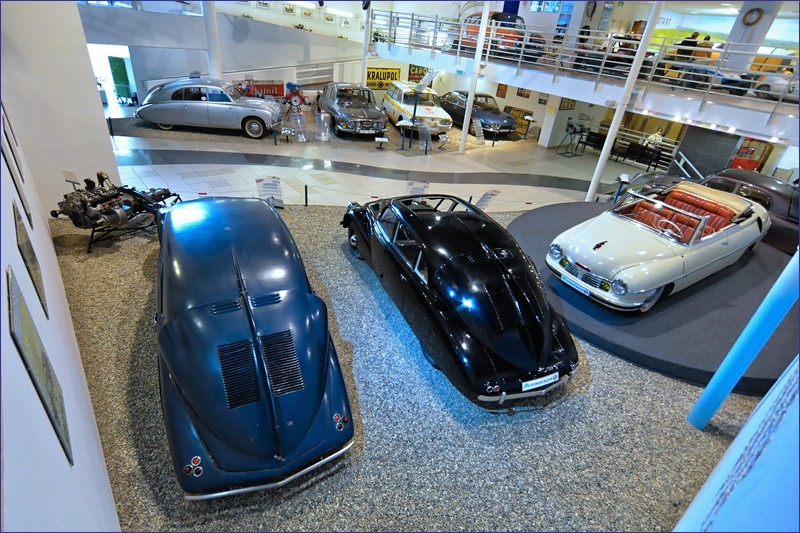
Direction: Frýdek–Místek
Frýdek–Místek (optional) – Formerly two towns, merged in 1943 along with some villages. Easy to reach by direct trains from Cieszyn. The railway station is a plus. Frýdek has a castle square and a palace housing the Beskydy Museum. Nearby is the Basilica of the Virgin Mary. Místek also has its own market square (Freedom Square), but is mostly concrete housing. An average town—neither ugly nor charming.
Direction: Olomouc
Olomouc – The capital of the Olomouc Region. A beautiful center with two market squares and charming streets and alleys. A 10–15 minute walk from the railway station, or a short tram ride. Many religious landmarks: cathedral, churches, town hall, and a pleasant atmosphere. Not overrun by tourists. A well-regarded zoo is about 10 km from the center. An excellent destination for a day trip.
Litovel (optional) – A typical Czech small town about 18 km from Olomouc, known for its beer. The attractive small center has a town hall tower open to tourists. Nearby are fish ponds and a notable high school building. Religious monuments include churches and chapels, the reconstructed St. John’s Bridge over the Morava River, and remnants of the city walls. To reach Litovel by train, change at Červenka Station. The line is local and often discussed for closure and conversion into a bike path. The bus ride from Olomouc takes about 45 minutes.
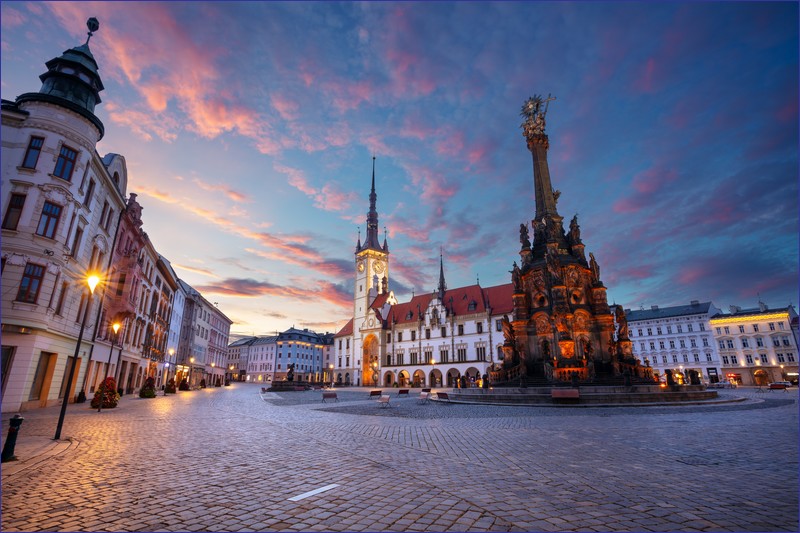
Direction: Rožnov pod Radhoštěm
Valašské Meziříčí (optional) – A town more attractive than average, but not a must-see. A 1.5 km walk from the train station. Worth seeing are the Žerotín and Kinský Palaces (the latter houses the Wallachian Museum), the Tapestry Museum, Butchery Museum, religious landmarks, an art gallery in a 1611 building, an observatory, a Jewish cemetery, and a Turkish soldiers’ memorial. Served by trains from Hranice na Moravě, Kojetín, Vsetín, and Frenštát pod Radhoštěm.
Rožnov pod Radhoštěm – A town of just under 20,000 residents, known for the Wallachian Open-Air Museum. Also features a small center with a market square and the Church of All Saints. About 4 km away are ruins of a small castle. Nearby is Radhošť Mountain (1,129 m). Accessible by train from Valašské Meziříčí, which itself connects to Hranice na Moravě.
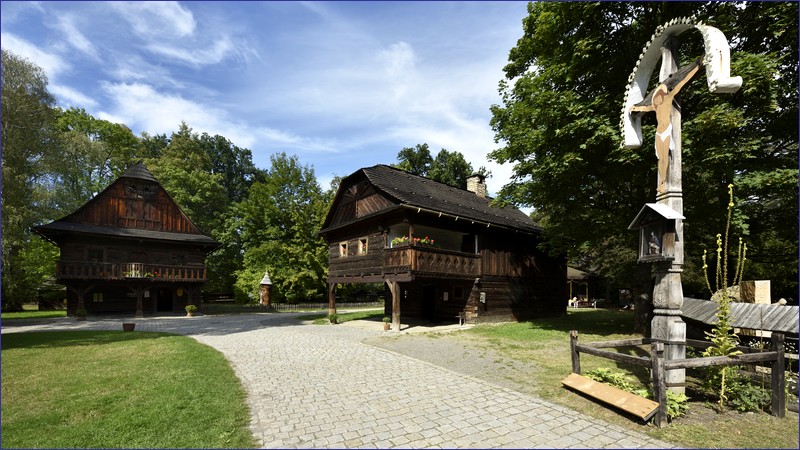
Direction: Žilina
From Ostrava, it’s easy to reach Slovakia by train, passing through Havířov, Český Těšín, and industrial Třinec. From stations between Třinec and Čadca, you can begin hikes in the Beskids.
Havířov (optional) – Known for its Brussels-style train stations and socialist-realist housing estates.
Český Těšín / Cieszyn – A city divided between the Czech Republic and Poland. The Olza River is the border. Czech Těšín has a beautiful train station and a town hall by the main square. The Polish side is more attractive—Old Town, castle hill, a lovely market square, numerous tidy streets, restaurants, shops, and a renovated train station just 15 minutes on foot from the Czech side.
Žilina – Along with Košice, my favorite Slovak town. The center is compact and close to the station—just follow the pedestrian street. Two squares (one historic), the Holy Trinity Cathedral, Church of St. Paul, and two shopping centers (which spoil one of the squares). Outside the center is Budatín Castle. A calm, pleasant town—3 hours is enough to explore. The railway station is adorned with beautiful stained-glass windows.
Related articles:
Train travel in the Czech Republic – a comprehensive guide
Scenic railways in the Czech Republic
Narrow-gauge railways in the Czech Republic
